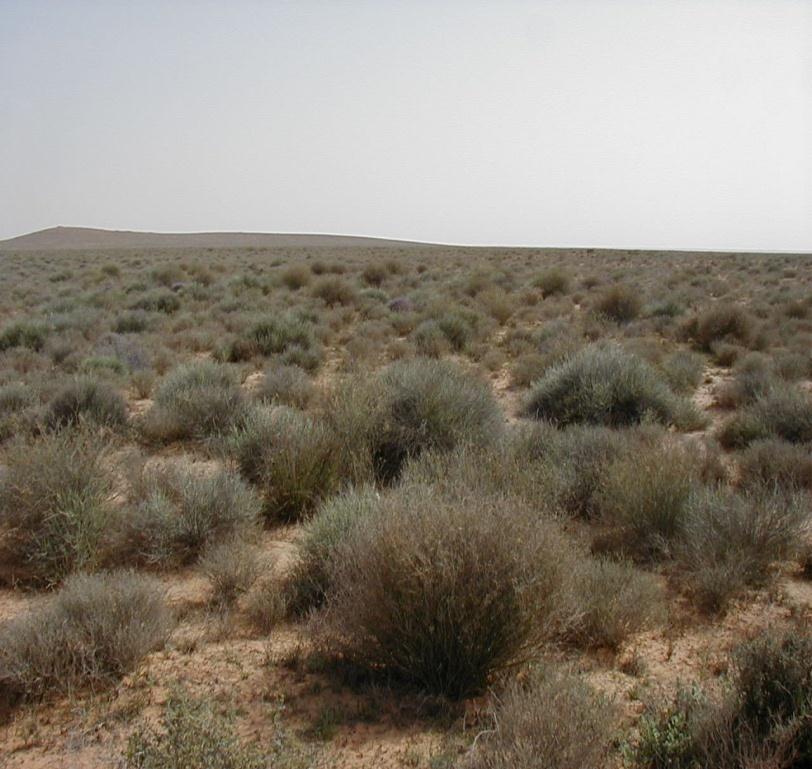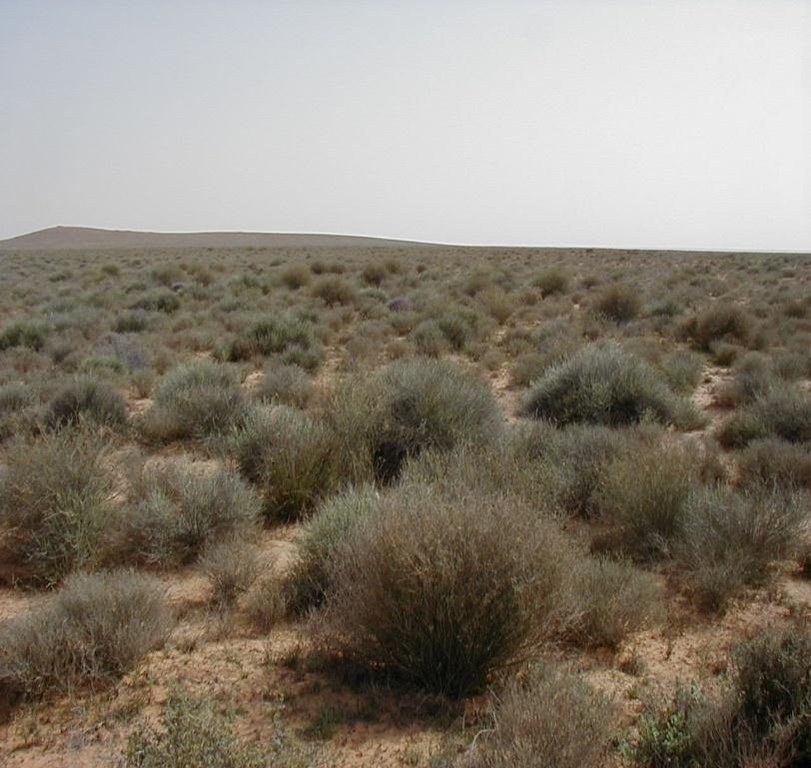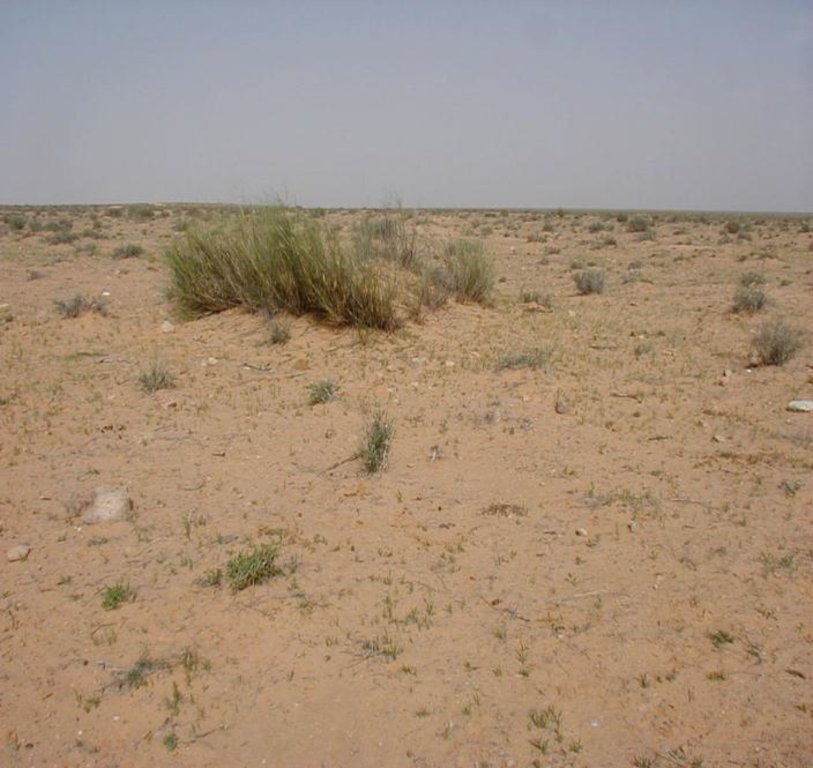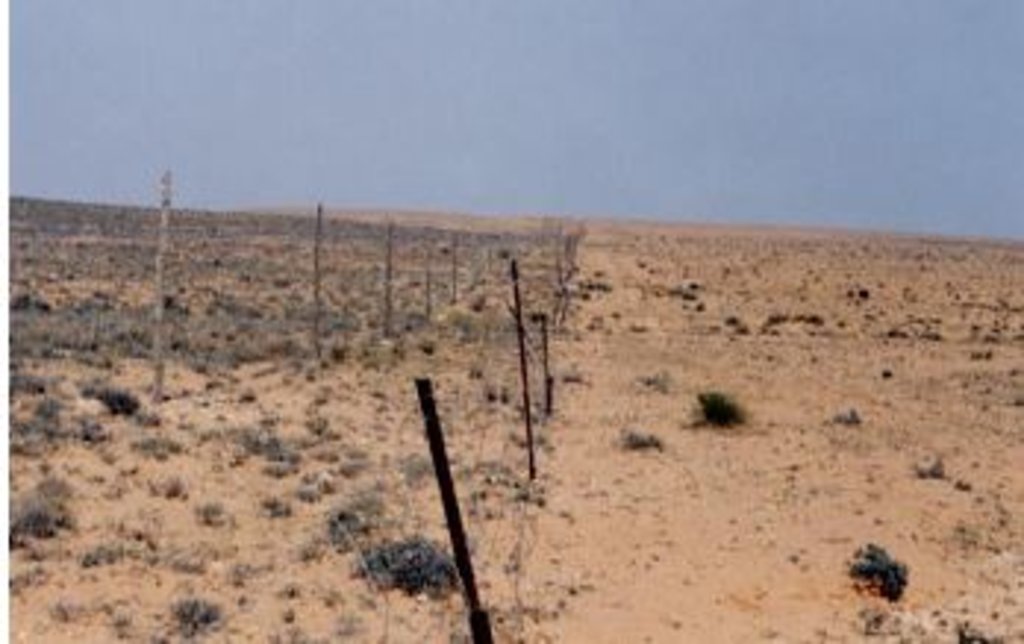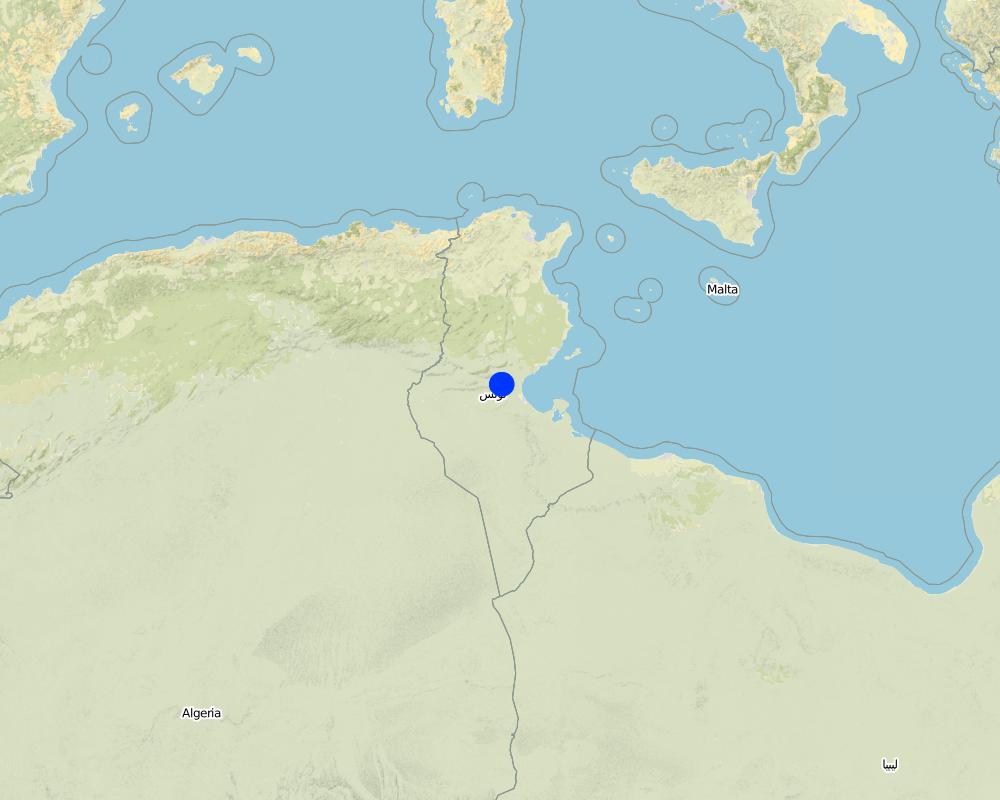Amélioration pastorale par la mise en repos [Tunisia]
- Creation:
- Update:
- Compiler: Donia Mühlematter
- Editor: –
- Reviewer: Donia Mühlematter
تحسين المراعي باستعمال الإراحة القدال
technologies_4169 - Tunisia
View sections
Expand all Collapse all1. General information
1.2 Contact details of resource persons and institutions involved in the assessment and documentation of the Technology
Key resource person(s)
SLM specialist:
OULED BELGACEM Azaiez
Institut des Rögions Arides
Tunisia
SLM specialist:
NEFFATI Mohamed
Institut des Régions Arides 4119 El Fjè - Medenine - Tunisie
Tunisia
Name of project which facilitated the documentation/ evaluation of the Technology (if relevant)
Decision Support for Mainstreaming and Scaling out Sustainable Land Management (GEF-FAO / DS-SLM)Name of the institution(s) which facilitated the documentation/ evaluation of the Technology (if relevant)
CDE Centre for Development and Environment (CDE Centre for Development and Environment) - SwitzerlandName of the institution(s) which facilitated the documentation/ evaluation of the Technology (if relevant)
Institut des Régions Arides de Médenine (Institut des Régions Arides de Médenine) - Tunisia1.3 Conditions regarding the use of data documented through WOCAT
The compiler and key resource person(s) accept the conditions regarding the use of data documented through WOCAT:
Yes
1.4 Declaration on sustainability of the described Technology
Is the Technology described here problematic with regard to land degradation, so that it cannot be declared a sustainable land management technology?
No
1.5 Reference to Questionnaire(s) on SLM Approaches (documented using WOCAT)
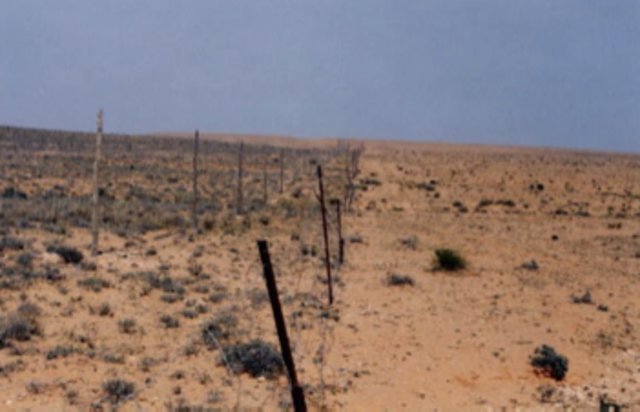
Mise en défens des parcours dégradés [Tunisia]
C'est une pratique qui consiste à soustraire successivement les terres de parcours à la vaine pâture, pendant une période plus ou moins longue. Cette méthode est le plus souvent appliquée dans les situations où la dégradation du couvert végétal pastoral n’a pas atteint le seuil d’irréversibilité. La mise en défens …
- Compiler: Donia Mühlematter
2. Description of the SLM Technology
2.1 Short description of the Technology
Definition of the Technology:
Les techniques de restauration sont généralement les plus conseillées si la dégradation n’a pas encore atteint le seuil d’irréversibilité et ce en raison de la facilité de leur application ainsi que leur coût relativement faible) Parmi les opérations de restauration, la mise en repos est la technique la plus couramment utilisée pour assurer la remontée biologique spontanée de la végétation originaire dégradée. Les résultats de la mise en repos réalisés dans plusieurs endroits arides où la dynamique de la végétation a connu un blocage, témoignent de l’efficacité de cette technique. Cette efficacité se traduit par une réinstallation et une régénération des espèces de haute valeur pastorale ayant disparu.
2.2 Detailed description of the Technology
Description:
La mise en repos se propose d’aider à l’initiation d’une dynamique ascendante des principaux types de parcours s’apprêtant à cette technique et d’asseoir une discipline de gestion basée sur le principe de la rotation ou du pâturage différé. Il s'agit d'un mode de gestion basé sur une utilisation régulière des sites retenus (abstraction faite de la nature de l’année), celle-ci alternant avec des périodes de récupération du couvert végétal de façon à aider à une remontée biologique de l’écosystème, tout en participant au soulagement d’autres sites soumis à une forte pression d’utilisation. Considérant les conditions écologiques du parcours cible, chaque parcelle mise en repos doit être mise hors usage pendant une période donnée en vue d’augmenter les chances de réhabiliter le stock en graines et/ou les souches des plantes pastorales les plus intéressantes et les plus affectées par la mauvaise gestion.
2.3 Photos of the Technology
2.5 Country/ region/ locations where the Technology has been applied and which are covered by this assessment
Country:
Tunisia
Region/ State/ Province:
Menzel Habib- Gabes
Specify the spread of the Technology:
- evenly spread over an area
If precise area is not known, indicate approximate area covered:
- 0.1-1 km2
Is/are the technology site(s) located in a permanently protected area?
No
Map
×2.6 Date of implementation
If precise year is not known, indicate approximate date:
- 10-50 years ago
2.7 Introduction of the Technology
Specify how the Technology was introduced:
- during experiments/ research
3. Classification of the SLM Technology
3.1 Main purpose(s) of the Technology
- reduce, prevent, restore land degradation
- conserve ecosystem
- reduce risk of disasters
- adapt to climate change/ extremes and its impacts
3.2 Current land use type(s) where the Technology is applied
Land use mixed within the same land unit:
No

Grazing land
Extensive grazing:
- Nomadism
- Semi-nomadic pastoralism
- Transhumant pastoralism
3.3 Has land use changed due to the implementation of the Technology?
Has land use changed due to the implementation of the Technology?
- No (Continue with question 3.4)
3.4 Water supply
Water supply for the land on which the Technology is applied:
- rainfed
3.5 SLM group to which the Technology belongs
- area closure (stop use, support restoration)
- pastoralism and grazing land management
- improved ground/ vegetation cover
3.6 SLM measures comprising the Technology

management measures
- M2: Change of management/ intensity level
- M3: Layout according to natural and human environment
3.7 Main types of land degradation addressed by the Technology

physical soil deterioration
- Pc: compaction
- Ps: subsidence of organic soils, settling of soil
- Pu: loss of bio-productive function due to other activities

biological degradation
- Bc: reduction of vegetation cover
- Bh: loss of habitats
- Bq: quantity/ biomass decline
- Bs: quality and species composition/ diversity decline
- Bl: loss of soil life

water degradation
- Ha: aridification
3.8 Prevention, reduction, or restoration of land degradation
Specify the goal of the Technology with regard to land degradation:
- restore/ rehabilitate severely degraded land
- adapt to land degradation
4. Technical specifications, implementation activities, inputs, and costs
4.1 Technical drawing of the Technology
Technical specifications (related to technical drawing):
Sur la base d’un certain nombre d’indicateurs comme la baisse du taux de recouvrement et la rareté des espèces de haute valeur pastorale comme les graminées pérennes, la mise en repos reste la technique la moins coûteuse et la plus efficace pour permettre la reconstitution spontanée de la végétation pastorale. Cette technique a permis d’obtenir des ré-sultats très encourageants particulièrement dans le sud de la Tunisie dans la mesure où son effet bénéfique aussi bien dans la conservation de la biodiversité et l’amélioration de la production pastorale est très net lorsque les conditions de son application soient réunies.
Author:
OULED BELGACEM Azaiez
4.2 General information regarding the calculation of inputs and costs
Specify how costs and inputs were calculated:
- per Technology area
Indicate size and area unit:
ha
other/ national currency (specify):
Dinars Tunisien (DT)
If relevant, indicate exchange rate from USD to local currency (e.g. 1 USD = 79.9 Brazilian Real): 1 USD =:
2.5
Indicate average wage cost of hired labour per day:
10 DT
4.3 Establishment activities
| Activity | Timing (season) | |
|---|---|---|
| 1. | Délimitation de la parcelle à mettre en repos | |
| 2. | Suivi-évaluation de l’état de la végétation pastorale pendant 3 années. | |
| 3. | Le gardiennage est assuré par les bénéficiaires. |
4.4 Costs and inputs needed for establishment
| Specify input | Unit | Quantity | Costs per Unit | Total costs per input | % of costs borne by land users | |
|---|---|---|---|---|---|---|
| Labour | Compensation (concentré) | personne | 2.0 | 10.0 | 20.0 | |
| Labour | Mesures accompagnatrices | personne | 5.0 | 10.0 | 50.0 | |
| Labour | Gardiennage | personne | 5.0 | 10.0 | 50.0 | |
| Total costs for establishment of the Technology | 120.0 | |||||
| Total costs for establishment of the Technology in USD | 48.0 | |||||
Comments:
La contribution du bénéficiaire se limite au respect de l’opération de la mise en repos (exclure tout type d’intervention). La compensation est assurée par l’Office de l’Elevage et des Pâturages.
5. Natural and human environment
5.1 Climate
Annual rainfall
- < 250 mm
- 251-500 mm
- 501-750 mm
- 751-1,000 mm
- 1,001-1,500 mm
- 1,501-2,000 mm
- 2,001-3,000 mm
- 3,001-4,000 mm
- > 4,000 mm
Agro-climatic zone
- arid
5.2 Topography
Slopes on average:
- flat (0-2%)
- gentle (3-5%)
- moderate (6-10%)
- rolling (11-15%)
- hilly (16-30%)
- steep (31-60%)
- very steep (>60%)
Landforms:
- plateau/plains
- ridges
- mountain slopes
- hill slopes
- footslopes
- valley floors
Altitudinal zone:
- 0-100 m a.s.l.
- 101-500 m a.s.l.
- 501-1,000 m a.s.l.
- 1,001-1,500 m a.s.l.
- 1,501-2,000 m a.s.l.
- 2,001-2,500 m a.s.l.
- 2,501-3,000 m a.s.l.
- 3,001-4,000 m a.s.l.
- > 4,000 m a.s.l.
Indicate if the Technology is specifically applied in:
- not relevant
5.3 Soils
Soil depth on average:
- very shallow (0-20 cm)
- shallow (21-50 cm)
- moderately deep (51-80 cm)
- deep (81-120 cm)
- very deep (> 120 cm)
Soil texture (topsoil):
- coarse/ light (sandy)
- medium (loamy, silty)
Soil texture (> 20 cm below surface):
- coarse/ light (sandy)
- medium (loamy, silty)
Topsoil organic matter:
- low (<1%)
5.4 Water availability and quality
Ground water table:
> 50 m
Availability of surface water:
poor/ none
Water quality (untreated):
unusable
Water quality refers to:
ground water
Is water salinity a problem?
Yes
Is flooding of the area occurring?
No
5.5 Biodiversity
Species diversity:
- low
Habitat diversity:
- low
5.6 Characteristics of land users applying the Technology
Sedentary or nomadic:
- Sedentary
- Semi-nomadic
Market orientation of production system:
- subsistence (self-supply)
Off-farm income:
- less than 10% of all income
- > 50% of all income
Relative level of wealth:
- very poor
Individuals or groups:
- cooperative
Level of mechanization:
- manual work
Gender:
- men
Age of land users:
- middle-aged
- elderly
5.7 Average area of land used by land users applying the Technology
- < 0.5 ha
- 0.5-1 ha
- 1-2 ha
- 2-5 ha
- 5-15 ha
- 15-50 ha
- 50-100 ha
- 100-500 ha
- 500-1,000 ha
- 1,000-10,000 ha
- > 10,000 ha
Is this considered small-, medium- or large-scale (referring to local context)?
- large-scale
5.8 Land ownership, land use rights, and water use rights
Land ownership:
- communal/ village
Land use rights:
- communal (organized)
Water use rights:
- communal (organized)
Are land use rights based on a traditional legal system?
Yes
5.9 Access to services and infrastructure
health:
- poor
- moderate
- good
education:
- poor
- moderate
- good
technical assistance:
- poor
- moderate
- good
employment (e.g. off-farm):
- poor
- moderate
- good
markets:
- poor
- moderate
- good
energy:
- poor
- moderate
- good
roads and transport:
- poor
- moderate
- good
drinking water and sanitation:
- poor
- moderate
- good
financial services:
- poor
- moderate
- good
6. Impacts and concluding statements
6.1 On-site impacts the Technology has shown
Socio-economic impacts
Production
fodder production
Comments/ specify:
Amélioration de la productivité des parcours.
animal production
Comments/ specify:
Amélioration de la production animale.
risk of production failure
Comments/ specify:
Conservation du couvert végétal.
Income and costs
farm income
Comments/ specify:
Amélioration du revenu de l’éleveur.
Socio-cultural impacts
food security/ self-sufficiency
Comments/ specify:
Amélioration du niveau de vie des éleveurs.
SLM/ land degradation knowledge
Comments/ specify:
Amélioration du savoir faire en matière d’amélioration pastorale.
Ecological impacts
Soil
soil moisture
Comments/ specify:
Conservation des eaux et des sols.
Biodiversity: vegetation, animals
plant diversity
Comments/ specify:
Conservation de la biodiversité.
6.3 Exposure and sensitivity of the Technology to gradual climate change and climate-related extremes/ disasters (as perceived by land users)
Climate-related extremes (disasters)
Climatological disasters
| How does the Technology cope with it? | |
|---|---|
| drought | very well |
6.4 Cost-benefit analysis
How do the benefits compare with the establishment costs (from land users’ perspective)?
Short-term returns:
slightly positive
Long-term returns:
positive
How do the benefits compare with the maintenance/ recurrent costs (from land users' perspective)?
Short-term returns:
slightly positive
Long-term returns:
positive
6.5 Adoption of the Technology
- > 50%
Of all those who have adopted the Technology, how many did so spontaneously, i.e. without receiving any material incentives/ payments?
- 91-100%
Comments:
Cette technologie est acceptée par la population et les techniciens des services de développement locaux ne trouvent pas de problèmes à sa réalisation. La principale contrainte qui peut menacer la pérennité de l’adoption de la technique c’est la subvention accordée par l’Etat. La cessation de cette compensation pourrait être une cause du non respect de la population des conditions de réussite de la technique.
6.6 Adaptation
Has the Technology been modified recently to adapt to changing conditions?
No
6.7 Strengths/ advantages/ opportunities of the Technology
| Strengths/ advantages/ opportunities in the land user’s view |
|---|
| Technique simple et très peu coûteuse ->> Sensibiliser et encourager la population à la pratiquer même pour de très courtes durées. |
| Strengths/ advantages/ opportunities in the compiler’s or other key resource person’s view |
|---|
| Technologie permettant l’amélioration de la productivité des parcours et la conservation de la biodiversité --> Respecter les condi-tions de son application. |
6.8 Weaknesses/ disadvantages/ risks of the Technology and ways of overcoming them
| Weaknesses/ disadvantages/ risks in the land user’s view | How can they be overcome? |
|---|---|
| La subvention accordée par l’Etat peut influencer la durabilité d’adoption de la technique. | Sensibiliser la population sur l’importance d’une gestion durable des ressources pastorales. |
7. References and links
7.1 Methods/ sources of information
- field visits, field surveys
- interviews with SLM specialists/ experts
- compilation from reports and other existing documentation
7.2 References to available publications
Title, author, year, ISBN:
Ouled Belgacem, A., Ben Salem H., Bouaicha A., El Mourid M. 2008. Communal rangeland rest in arid area, a tool for facing animal feed costs and drought mitigation: the case of Chenini Community, Southern Tunisia. Journal of Biological Sciences 8 (4): 822-825.
Available from where? Costs?
Gratuit.
Title, author, year, ISBN:
Ouled Belgacem, A. 1999. Aperçu sur l’effet de la mise en défens sur la dynamique de la végétation en zone désertique de la Tunisie. Mémoire DEA. Faculté des Sciences de Sfax. Tunisie. 78 p.
Available from where? Costs?
Gratuit.
7.4 General comments
Technologie de GDT: Amélioration pastorale par la mise en repos, Pays : Tunisie.
Nom du projet /Institution : Institut des Régions Arides - Medenine - Tunisie – Panorama 2010.
Links and modules
Expand all Collapse allLinks

Mise en défens des parcours dégradés [Tunisia]
C'est une pratique qui consiste à soustraire successivement les terres de parcours à la vaine pâture, pendant une période plus ou moins longue. Cette méthode est le plus souvent appliquée dans les situations où la dégradation du couvert végétal pastoral n’a pas atteint le seuil d’irréversibilité. La mise en défens …
- Compiler: Donia Mühlematter
Modules
No modules


